2020-2021 Cohort I Projects
Treated Waste Plastics: A Solution for Enhancing Performance of Concrete Construction
Title: Treated Waste Plastics A Solution for Enhancing Performance of Concrete Construction
Team: Dr. Christian Hoover (Director) and Dr. Elham Fini (Co-PI)
School of Sustainable Engineering and the Built Environment, Fulton School of Engineering
Project Type: Proof of Concept
Project Theme: Sustainable and Healthy Environments & Spaces
The Built Environment is filled with concrete and it has many popular uses. Concrete is mostly made up of sand, water, rocks and cement. Unfortunately, the manufacturing of cement, the key ingredient that gives concrete it’s binding strength, is very harmful to the environment. The production of 1 ton of cement releases at least 0.5 tons of CO2 into the atmosphere and in 2016, over 1.45 gigatons of CO2 were released globally due to just cement production. Concrete is also weak in tension. Steel is typically used to help with this but the rising costs of steel and tariffs demand more cost effective solutions. Concrete is also very heavy and expensive to maneuver and the Ingredients are running out! According to Joyce Msuya of the UN Env. Program “The needs and expectations of our societies cannot be met without improved governance of global sand resources”. The situation demands new solution techniques to help solve these problems and we believe that the solution to these problems is an innovative use of another material polluting the world today, plastics.
Here, we propose to use, Oil Treated Plastics (OTPC) as an additive in concrete. Our motivation and objectives are: to 1) reduce the ingredients and CO2 footprint of concrete infrastructure 2) reduce the weight of concrete and 3) source plastics from consumer waste streams and existing landfills. In order to use plastics they must be treated to enable them to chemically bond with the cement and resist tension. Here, we propose a simple and scalable process to treat large volumes of plastics. We first source plastics from waste and landfills at zero cost, then grind the plastics into a powder and mix them with waste soy oil, also sourced at zero cost, and place in the microwave. The combination of heat and mild radiation makes the plastic more hydrophilic and able to chemically bond with the cement. From an engineering perspective the plastics will help resist tension, thus reducing the demand for expensive steel, will help reduce the weight of concrete and partially replace cement thus reducing the CO2 footprint of infrastructure. Lab experiments will be performed to optimize the plastic treatment procedure to make the particles more favorable to bonding with the cement. Then the amount of particles in each concrete mix will also be optimized to achieve the maximum improvement in concrete performance as established in design codes and testing standards. In addition to interfacing with the stronger emphasis for greener construction, this approach provides an alternative to disposing plastics in landfills, including those that can’t be recycled, and a cost effective method to reduce demand of steel and CO2 emissions globally creating cleaner air.
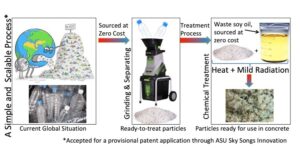

Christian Gerald Hoover
Assistant Professor
Arizona State University
[email protected]
Dr. Christian Hoover is an Assistant Professor of structures in the School of Sustainable Engineering and the Built Environment at Arizona State University. He joined the ASU faculty in 2016. He developed and manages the Experimental Multiscale Mechanical Materials Laboratory (EM3 Lab). He received his doctorate in theoretical and applied mechanics from Northwestern University and his master’s and bachelor’s degrees in civil engineering from New Jersey Institute of Technology. Hoover completed his postdoctoral training at Massachusetts Institute of Technology in 2016.
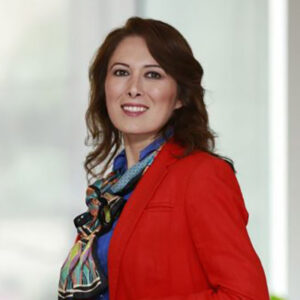
Elham Fini
Associate Professor
Arizona State University
[email protected]
Dr. Fini is the Director of the International Innovation Network for Construction Materials, Methods and Management (ICM3), Senior Sustainability Scientist and, Associate professor of School of Sustainable Engineering and Built Environment at Arizona State University. She is also J. W. Fulbright Scholar of Aalborg University of Denmark. She is currently serving as an AAAS-Lemelson Invention Ambassador working to promote culture of invention and innovation in academia. She is also the co-founder of Bio-Adhesive Alliance Inc., a spin-off company from her research group. She received her Ph.D. from the University of Illinois at Urbana-Champaign. She has been a research affiliate at MIT’s Center for Materials Science and Engineering and an Associate Editor of the ASCE Journal of Materials. She has served as the president of ASCE’s North Carolina Northern Branch and a program director of the National Science Foundation. She has been an invited speaker at Kavli Frontiers of Science at the National Academy of Science. Her achievements were recognized via multiple awards including an NSF CAREER award, ASEE Gerald Seeley award, BEYA Emerald STEM Innovation award, and NC BioTech Research Excellence award.
Sensor Embedded LRT
OBSERVING HUMAN-SCALE URBAN AIR POLLUTION AND TEMPERATURE USING SENSOR-EMBEDDED LIGHT-RAIL PUBLIC TRANSPORTATION
PI: Dr. Samuel A. Markolf, School of Sustainable Engineering and the Built Environment
Co-PI: Dr. Mikhail V. Chester, School of Sustainable Engineering and the Built Environment
Despite many positive attributes, the Phoenix region is unfortunately home to some of worst air quality and extreme temperatures in the nation. Exposure to extreme heat and air pollution contribute to a wide-range of health concerns (e.g., increased mortality and hospitalizations) for the region’s citizens—especially members of under-represented and underserved communities. Ongoing efforts to understand and mitigate these threats typically rely on a series of stationary temperature and air quality monitoring stations distributed throughout the county. However, air pollution and extreme heat are experienced at the human-scale, not the county-scale. Thus, in the absence of human-scale monitoring and analysis, we are left operating under relatively coarse assumptions and extrapolations about exposure, which in turn can complicate the consideration and implementation of mitigation efforts.
Given these needs and challenges, we propose installing low-cost, rapidly deployable environmental sensors on light-rail trains in order to form a mobile platform for high spatial and temporal resolution monitoring and evaluation of temperature and air quality throughout the Phoenix region. In particular, the sensors will measure factors such as air temperature, humidity, particulate matter, and ozone at frequent and regular intervals as the trains traverse the region on a daily basis. We will build upon existing relationships to collaborate with regional stakeholders such as the City of Phoenix, the City of Tempe, and Valley Metro. In particular, all data collected throughout the project will be made publically available via our lab website, and policy briefs summarizing key developments and findings will be developed.
The potential benefits of this project are manifold. First, it can help identify temporally and geographically distinct ‘trouble spots’ for heat and air quality exposure throughout the region. Gaining a better understanding of the specific times and locations of trouble spots can then contribute to more targeted (and presumably) more effective mitigation strategies. Second, the temperature and air quality monitoring conducted by this approach supplements the existing county-level monitoring stations, and can provide a new picture of exposure in under-represented/underserved communities that we do not currently have. Finally, this project can allow for the assessment of the pros and cons of using low-cost, rapidly deployable sensors as mechanisms for understanding local environmental conditions and hopefully serve as a springboard for larger scale deployment of such approaches across a multitude of vehicle types and locations.
Compared to alternative approaches for monitoring urban temperature and air quality, we believe our proposed project offers some distinct advantages. First, the measurements we will collect are more spatially and temporally refined than the existing stationary monitoring network. Second, our approach is likely to be cheaper, more consistent, and more environmentally friendly than other mobile sampling techniques such as cars or buses. Finally, in contrast to the propriety data collected by sensors in private vehicles, all data we collect will be free and publically available.
Ultimately, the data, results, and insights from this project can guide and catalyze follow-on efforts to scale up this approach throughout transportation systems and eventually result in a widespread human-scale environmental monitoring and mitigation network across all metropolitan areas.


Samuel Markolf
Assistant Research Professor
Arizona State University
Dr. Samuel Markolf is an Assistant Research Professor within the School for Sustainable Engineering and the Built Environment at Arizona State University and a Research Fellow within the NSF sponsored Urban Resilience to Extremes Sustainability Research Network (UREx SRN). He has a wealth of experience and knowledge related to urban sustainability and resilience. Example projects include employing ubiquitous data sets to estimate and compare urban emissions, and studying infrastructure vulnerability and resilience to climate stressors like extreme heat. Dr. Markolf is the Co-Lead PI on a recently awarded grant (“Benefits and Costs of Reflective Parking Lot Coatings for Mitigating Heat in Maricopa County”) from the Healthy Urban Environment (HUE) collaborative initiative between ASU and Maricopa County, as well as a collaborator on ASU’s Knowledge Exchange for Resilience recently launched Heat Resilience in Mobile Homes Innovation Challenge. He earned a B.S. in Chemical Engineering from the University of Texas at Austin, M.S. in Civil & Environmental Engineering from Carnegie Mellon University, and a joint-Ph.D. in Civil & Environmental Engineering and Engineering & Public Policy from Carnegie Mellon University.
Storytelling Robots to Assist Older Adults with Dementia and Their Caregivers
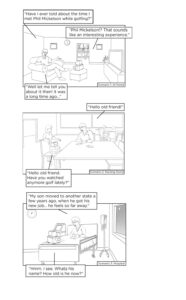
In 2020, an estimated 5.8 million Americans will be living with Alzheimer’s, the most common form of dementia, and is expected to reach 7.1 million by 2025 and 13.8 million by 2050. The national cost of formal care for Alzheimer’s patients in 2020 is estimated to be $305 billion and is expected to reach $1.1 trillion by 2050; whereas, an estimated 83% of informal care is coming from family, friends, or other unpaid caregivers, making up approximately 16 million individuals.
Dementia negatively affects patients and caregivers. Patients experience feelings of depression, isolation, and aggression, while caregivers frequently report high levels of stress and depression along with financial and physical difficulties. The Alzheimer’s Association has recommended for patients to engage in storytelling as a way to combat some of these feelings. For caregivers, recommendations are meditation, breathing exercises, and taking time for oneself. Yet many technologies for older adults with dementia are solely focused on the patient, do not include features for the caregiver, and do not relate to larger smart city environments.
The purpose of this work is to assist dementia patients, and their caregivers, who cannot afford to move into an assisted living facility but still live with or require live-in caregiving support. We aim to contribute to the future of in-home caregiving in smart city environments, where we see homes as the central intersection between citizens and smart cities. Understanding how aging is different for individuals with dementia inside the home verses inside assisted living thus represents a key step for advancing care-centric, smart-home technologies. We will specifically focus on addressing feelings of depression, isolation, and stress through testing different human-robot interfaces to help older adults with dementia, and caregivers, no matter where they reside.
A robotic platform was chosen to allow dementia patients to feel they are interacting with another person instead of a computer which could create a mental barrier. In dementia care, particular attention has been paid to the benefits of storytelling interactions. The benefits of storytelling for dementia patients include feeling they have accomplished something, promoting self-esteem, improving creative skills, improving their social interaction, improving their verbal skills, provides a therapeutic opportunity to communicate, and replacing the pressure to remember.
A storytelling feature of the robot which will induce feelings of fun and provide an interaction that simulates interaction with another human. The presence of a robot in a caregiving setting creates the opportunity for the caregiver to complete other tasks during the storytelling sessions. Visual cues will be used to assess emotions in the patient to detect aggression and offer coping mechanisms such as breathing exercises or music therapy to relax the patient. The caregiver can benefit from the patient using the robot because it creates an opportunity for them to complete tasks around the home or take personal time for themselves for mental or physical health. In addition, the robot will include a caregiver profile which can lead these individuals through a series of meditation and breathing exercises.
Storytelling Robots to Assist Older Adults with Dementia and Their Caregivers – Project Summary
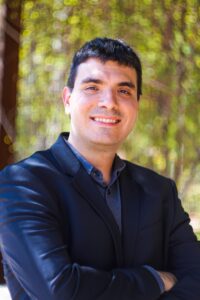
Troy McDaniel
Assistant Professor
Arizona State University
Troy McDaniel is an Assistant Professor in Engineering at Arizona State University. He is the Director of the HAPT-X Laboratory and Center for Cognitive Ubiquitous Computing (CUbiC). McDaniel’s research interests include robotics, haptic interfaces, human-computer interaction, and machine learning, especially for smart city and smart living applications. He is particularly interested in assistive technologies for individuals with sensory impairments, rehabilitative technologies for individuals with physical impairments, and more broadly, technologies for health and wellness. Specific research topics he investigates include novel sensory substitution methods and devices, new wearables for human augmentation, robotics for healthcare, and citizen-centric approaches for solving Smart City and Smart Living challenges. He has authored over 80 peer-reviewed publications and is the co-editor of the book “Haptic Interfaces for Accessibility, Health, and Enhanced Quality of Life”. For three years in a row, 2018-2020, he has won the Top 5% Teaching Award for faculty at the Ira A. Fulton Schools of Engineering in recognition of outstanding contributions to the education of students. He is a member of the Institute of Electrical and Electronics Engineers (IEEE) and the Association for Computing Machinery (ACM).
.
Passive Radiative Heat Pump Surfaces for Urban Cooling
Cities in the US are warming faster than the global average due to the choice of materials for buildings, roads, and other urban infrastructure, and as a result of waste heat emissions into the urban airshed. This local warming is further exacerbated by global climate change and associated feedbacks. Warming in cities has adverse consequences for the health and well-being of residents, including increases in heat-related illness, energy use for air conditioning, air pollution, and water use. As a result, cities are seeking solutions to mitigate extreme heat. However, there are two vexing barriers that planners and government officials need to overcome.
First, city governments are risk-averse and generally unwilling to experiment with new technologies or strategies. Proof-of-concept data from living laboratory experiments involving new urban cooling strategies can overcome the technical, political, and institutional barriers that unnecessarily slow innovation in this space. Second, urban cooling strategies can be costly to implement across the entire city. This points to a need for information regarding the spatial variation of extreme heat across the city to help inform targeted mitigation efforts.
This project addresses both of these challenges through a partnership with city government (Tempe) and industry (3M) to deploy and evaluate the performance of an innovative urban cooling technology while simultaneously developing a sensor network for tracking variations in thermal conditions across the city.
The urban cooling technology being tested—radiative films—is made possible by recent advances in materials science that enable the creation of coatings and films with extremely high reflectance to the sun’s energy while also being very efficient at radiating the surface’s own thermal energy out of the urban environment. If such a film is installed on an urban surface such as the roof of a bus shelter, that surface can actually remain cooler than the air temperature at all hours. As warm air flows over these surfaces, heat is removed from the air and then the surface radiates this heat out of the urban environment, and largely into space. For this reason, we refer to this approach as a radiative heat pump.
This project will evaluate surface and air temperature cooling potential of radiative films through a measurement study involving bus shelters in the City of Tempe. Three relatively isolated and unshaded bus shelters will be outfitted with 3M radiative films on their roof surfaces. An additional three shelters in similar environments will serve as controls. Small form-factor data logging temperature sensors will monitor shelter surface and air temperatures for a year. Additional episodic measurements will explore thermal comfort of bus shelter patrons at various times throughout the year.
A second element of this study is the deployment and testing of a unique RFID-based sensor technology that offers the promise of creating a dense, yet inexpensive network of urban temperature measurements integrated in mass transit infrastructure. This testing will leverage the planned measurements at the City of Tempe bus shelters by co-locating RFID-based temperature sensors and testing a system for acquiring thermal data from moving vehicles.

A qualitative representation of radiative film technologies applied to the roof of a pedestrian shelter.
Passive Radiative Heat Pump Surfaces for Urban Cooling – Project Summary

David J. Sailor
Professor
Arizona State University
David J. Sailor, Ph.D. is Professor in the School of Geographical Sciences and Urban Planning and Director of the Urban Climate Research Center (UCRC) at Arizona State University. In this role, he helps to coordinate the research of more than 36 faculty affiliates conducting urban climate related research across seven schools at ASU. He joined ASU in 2016 having previously served as the Director of the Green Building Research Laboratory (GBRL) at Portland State University, and prior to that, serving as Director of the National Institute for Global Environmental Change (NIGEC) at Tulane University.
Professor Sailor received his PhD from UC Berkeley, where he also conducted research as part of the Energy and Environment Division of Lawrence Berkeley National Laboratory. His scholarly agenda focuses on the intersection of climate with the built environment. This includes investigation of feedback mechanisms between the built environment and climate with a focus on building energy consumption and renewable energy resources as well as both indoor and outdoor thermal comfort and air quality. He has worked extensively on quantifying the causes and prospects for mitigating the urban heat island effect, including investigation of innovative materials and technologies integrated into building designs and urban infrastructure.
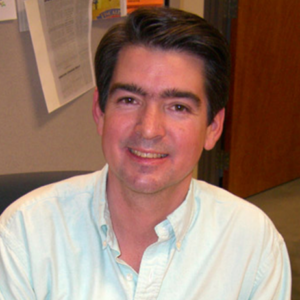
Richard R. King
Professor
Arizona State University
Richard R. King, Professor in the School of Electrical, Computer and Energy Engineering at Arizona State University, received his Ph.D. and M.S. in electrical engineering from Stanford University, and his B.S. degree in physics, also from Stanford. His research on photovoltaics over the last 30 years has explored defects and recombination in compound semiconductors, silicon and compound semiconductor interface passivation, solar cell optics, metamorphic III-V materials, dilute nitride GaInNAs, sublattice ordering, high-transparency tunnel junctions, and high-efficiency multijunction solar cells with 3 to 6 junctions. In 2006, this work led to the first solar cell of any type to reach over 40% efficiency. Dr. King’s research group is also keenly interested in radiative transfer for solar thermal management, and the integration of photovoltaics into buildings, communities, and society. He is recipient of the 2010 William R. Cherry Award given by the IEEE for “outstanding contributions to photovoltaic science and technology.” Dr. King is an IEEE Fellow, a co-founding editor of the IEEE Journal of Photovoltaics, and served as general chair for the 40th IEEE Photovoltaic Specialists Conference in Denver, CO in 2014.
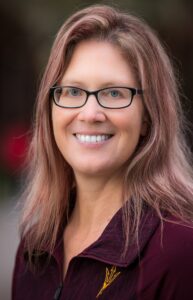
Ariane Middel
Affiliate Faculty
Arizona State University
Ariane Middel’s research interests lie in the interdisciplinary field of urban climate with focus on climate-sensitive urban infrastructure in the face of extreme heat and climatic uncertainty. Her goal is to advance fundamental understanding of how the built environment impacts heat and human thermal exposure in cities. She approaches heat from an unparalleled angle using innovative sensing and modeling techniques that draw on big data and artificial intelligence. At ASU, she directs the SHaDE Lab, which explores the “hot” topic in three dimensions: heat as it can be sensed by instruments; heat as it is experienced by humans; and heat as it can be modelled using microclimate simulations.
Middel is a member of the Urban Climate Research Center and the Central Arizona–Phoenix Long-Term Ecological Research (CAP LTER) program at ASU. She currently serves a 3-year term (2019-2022) on the Board of the International Association of Urban Climate (IAUC), the premier international organization for researchers engaged in all aspects of urban climate scholarship. She is also a Board member of the American Meteorological Society (AMS) Built Environment (BUE), a member of the International Society of Biometeorology (ISB), and the Institute of Electrical and Electronics Engineers (IEEE).
Middel joined the School of Arts, Media and Engineering as an assistant professor in 2018 and has a joint appointment with the School of Computing, Informatics, and Decision Systems Engineering. She received her PhD in computer science from University of Kaiserslautern, Germany and holds a master’s degree in engineering from University of Bonn, Germany.